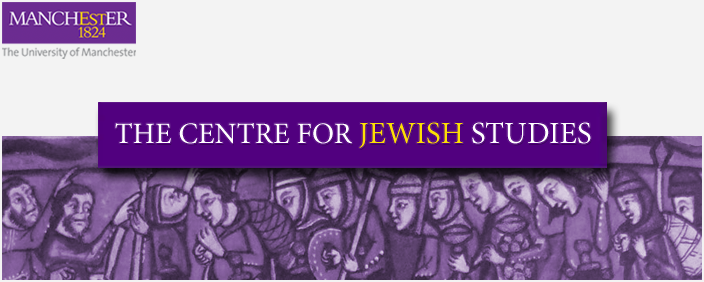The Sherman Lectures in Jewish Studies 2014
Thinking about Jews in Medieval Europe: Explorations with Text, Images and Sounds

Miri Rubin, Professor of Medieval and Early Modern History at Queen Mary University of London.
12-15 May 2014, Manchester, UK.
Series Abstract
Medieval Jews were embedded in the ideas and practices of every community of which they formed a part. This series will consider their experiences and their relations with non-Jews in the following contexts: 1. People and Places. 2. The Jewish Body. 3. Jews and Children. 4. Jews and Material Christianity.
Lecture 1. People and Places (Monday 12 May)
Who created ideas about Jews in medieval Europe, and how were these transmitted and recorded? Why did some periods display an intensity of interest in Jews compared to others? This lecture will consider the challenge posed by the presence of Jews to those who managed, taxed, led and educated medieval communities. It will probe the directions of change over time, as well as regional variation across Europe. Powerpoint 1.
Lecture 2. The Jewish Body (Tuesday 13 May)
Difference between social groups is always marked by external signs and often by the attribution of physical difference. The Middle Ages saw the development of some powerful ideas about the Jewish – usually male – body. This lecture will explore these ideas and their relation to prevailing concepts of well-being and virtue. It will probe how the Jewish body came to be seen as threatening and indeed predatory, and an enduring obstacle to true conversion. Powerpoint 2.
Lecture 3. Jews and Children (Wednesday 14 May)
One of the most horrific accusations born in medieval Europe was that of child murder. This lecture will explore the conditions that made the birth of such slander in twelfth-century Norwich possible. It will also consider how Christians viewed childhood and attempted making sense of Jewish kinship and family life. Powerpoint 3.
Lecture 4. Jews and Material Christianity (Thursday 15 May)
Everywhere they turned Jews saw and heard the signs of Christian religious culture: cathedrals, statues at street corners, shrines, processions, and bells. The final lecture explores the ideas Jews developed towards these pervasive images and sounds, and explores the rejection – as we as attractions – experienced towards what Caroline Bynum has called Material Christianity. Powerpoint 4.
Community Lecture: Jews in Medieval English Culture (Sunday 11 May)
Jews were embedded in the ideas and practices of every community of which they formed a part. Yet the experience of living as a Jew or with Jews varied greatly between European regions and over time. This lecture will consider the circumstances surrounding the settlement of Jews, and the interactions and attitudes that developed towards them. It will point out, in particular, the diverse attitudes and interactions experienced in different milieus: monastic, urban, scholastic, courtly, as well as in Latin, English and French.
Masterclass (post-graduates only): 'Persons and bodies, Jews and Christians: Challenges in studying the medieval past' (handout). 3:00-4:30pm on Tuesday 13 May at University Place 5.204.
The complete series of four lectures is also available as a YouTube playlist.
Next year: Sherman Lectures 2015: Amy-Jill Levine (Vanderbilt University): 'Jesus, Judaism and Christianity: Old Prejudices and New Possibilities'
Archive: Previous Sherman Lectures



